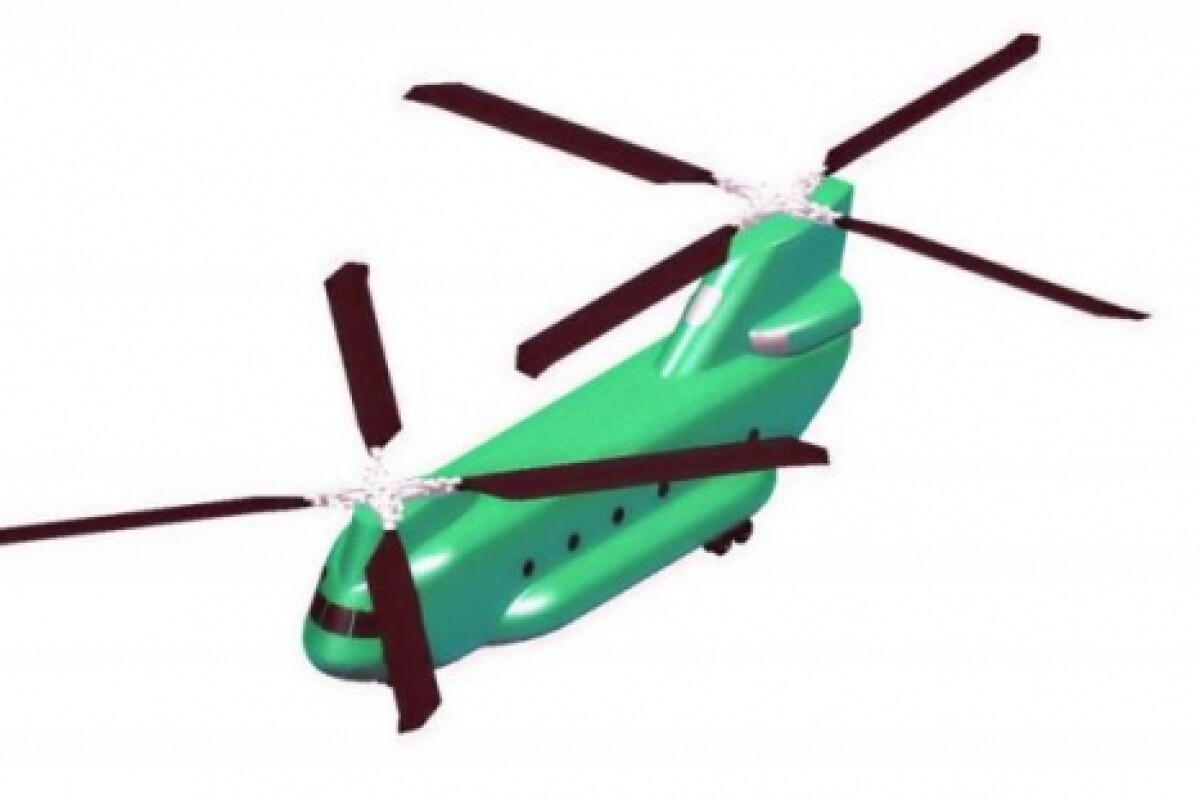September 24, 2005 The U.S. Army has awarded a second contract to perform conceptual design and analysis of a vertical-takeoff-and-landing concept for the Joint Heavy Lift (JHL) program. One contract, worth US$3.4 million, goes to Boeing Phantom Works for its Advanced Tandem Rotor Helicopter (ATRH). Boeing proposed the ATRH in theArmy's low-speed category, which is for vehicles that fly between 160 and 200 knots. As previously reported, the other contract, worth US$3.45 million, was awarded to the Bell Helicopter - Boeing Phantom Works team for the QuadTiltrotor (QTR) aircraft, which was entered in the high-speed category of 250 knots or more.
"These awards are important first steps toward defining a next-generation military weapon system - and a great opportunity to demonstrate how cutting edge technologies can be applied to meet joint service needs," said Ron Prosser, Boeing Phantom Works vice president and general manager of Integrated Defense Advanced Systems. "Boeing has been developing multiple configurations to help our customer better evaluate its requirements for Joint Heavy Lift."
The Boeing Advanced Tandem Rotor Helicopter exploits the system maturity, the extraordinary VTOL cargo-handling versatility and the unsurpassed maritime suitability of the tandem rotor platform, which uses two equally-sized rotors that spin in opposite directions for lift.
The ATRH will maximize the benefits of advanced technologies and lean approaches, and will capitalize on emerging technologies that improve weapons system effectiveness and operational costs.
Bell Boeing's QuadTiltrotor is an evolutionary application of the tiltrotor technology utilized in the V-22 Osprey. The QTR is a tandem-wing, four-proprotor aircraft with a large cargo fuselage and a rear-loading ramp.
Four turboshaft engines, each mounted in one of four tilting wingtip nacelles, power the proprotors through interconnected transmissions for redundancy. The QTR design will be sized, refined and analyzed over the next 18 months to determine program requirements and feasibility of further development.
The purpose of these contracts, according to the Army, is to define the "art of the possible," the "science of the probable" and the "design of the affordable" for a JHL VTOL rotorcraft that enables future joint concepts of operations.
Contractors will provide preliminary conceptual/preliminary designs for baseline aircraft, and will identify the impact of variations in payload, range, environmental conditions and shipboard compatibility on aircraft size, performance, operational suitability, cost, schedule and development risk. Each award is for 18 months.
The Boeing Phantom Works participation is through its Advanced Rotorcraft Systems team. Phantom Works is the advanced research and development unit and catalyst of innovation for Boeing. It provides advanced system solutions and innovative, breakthrough technologies that reduce cycle time and cost while improving the quality and performanceof aerospace products and services.





